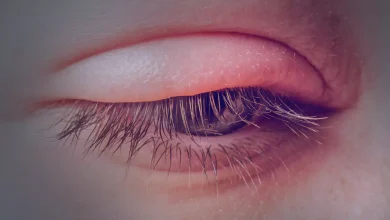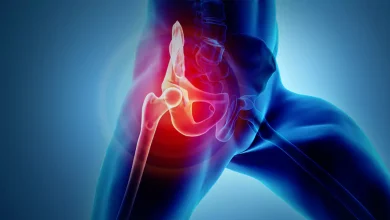All about Chalazia
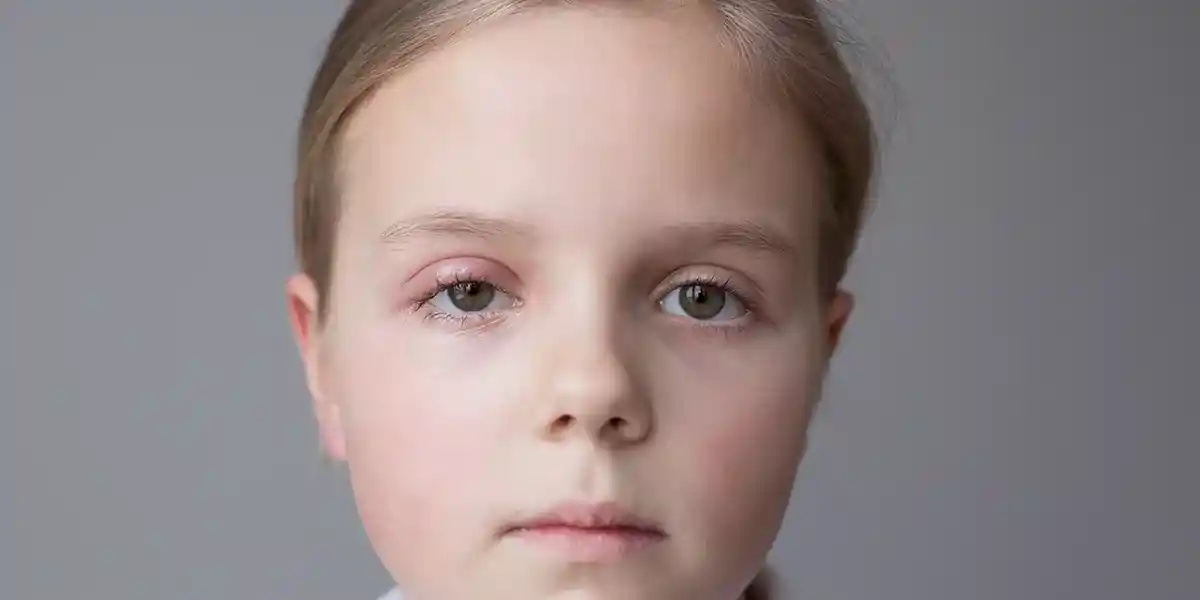
What is Chalazia?
Chalazion also known as an eyelid cyst or a meibomian cyst is a red bump on your eyelid that gradually develops when an oil gland (known as meibomian) is blocked. In the beginning, the chalazion might be painful, but after some period, it generally doesn’t hurt. A chalazion normally forms on the upper eyelids but it might sometimes form on the lower eyelid. Usually, chalazia (the plural of chalazion) develops in adults between the ages of 30 and 50. Though chalazia is not common in children, it can occur.
What are the Types of Chalazia?
There are two types of chalazia, a deep chalazion occurs because of an inflammation of a tarsal meibomian gland while a superficial chalazion occurs because of inflammation of a Zeis gland.
What are the Symptoms of Chalazia?
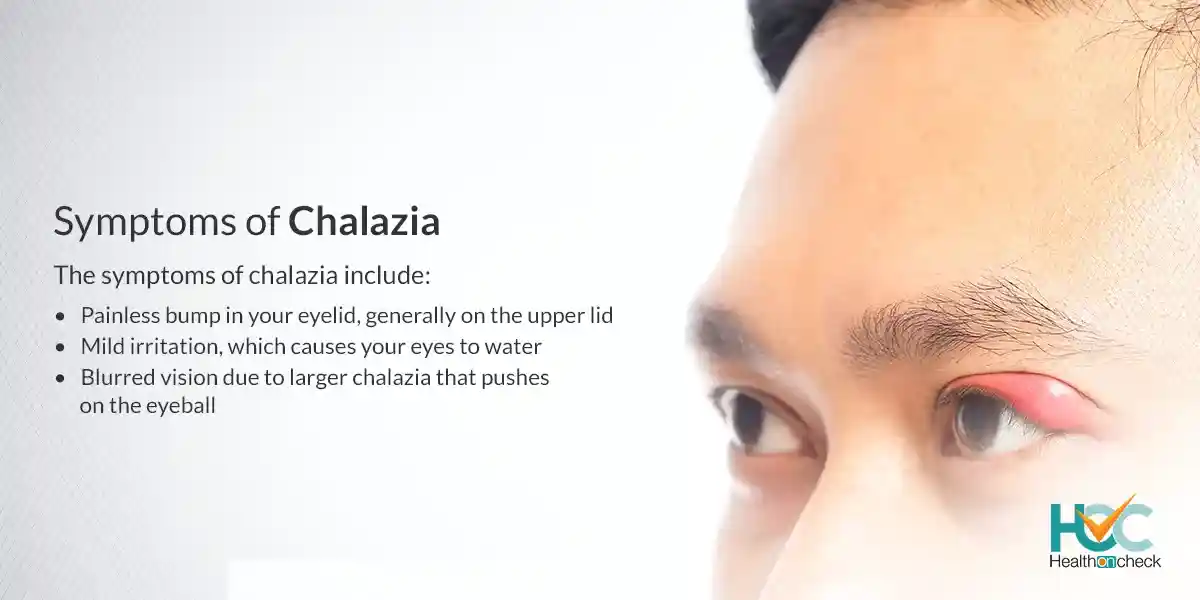
The symptoms of chalazia include:
- Painless bump in your eyelid, generally on the upper lid.
- Mild irritation, which causes your eyes to water.
- Blurred vision due to larger chalazia that pushes on the eyeball.
What are the Causes of Chalazia?
Chalazia might form when something blocks a small oil gland in the eyelid. These glands help keep the eye moist. A blocked gland begins to retain oil and swells. In some time, the fluid will drain, and a hard lump might form on your eyelid.
Some more causes of chalazia include:
- Rosacea (a skin condition causing acne, and redness).
- Persistent blepharitis, eyelid inflammation (swelling, redness, and irritation).
- Seborrheic dermatitis (dry, red, flaky, and itchy skin).
- Tuberculosis (TB).
- Viral infections.
What are the Risk Factors of Chalazia?
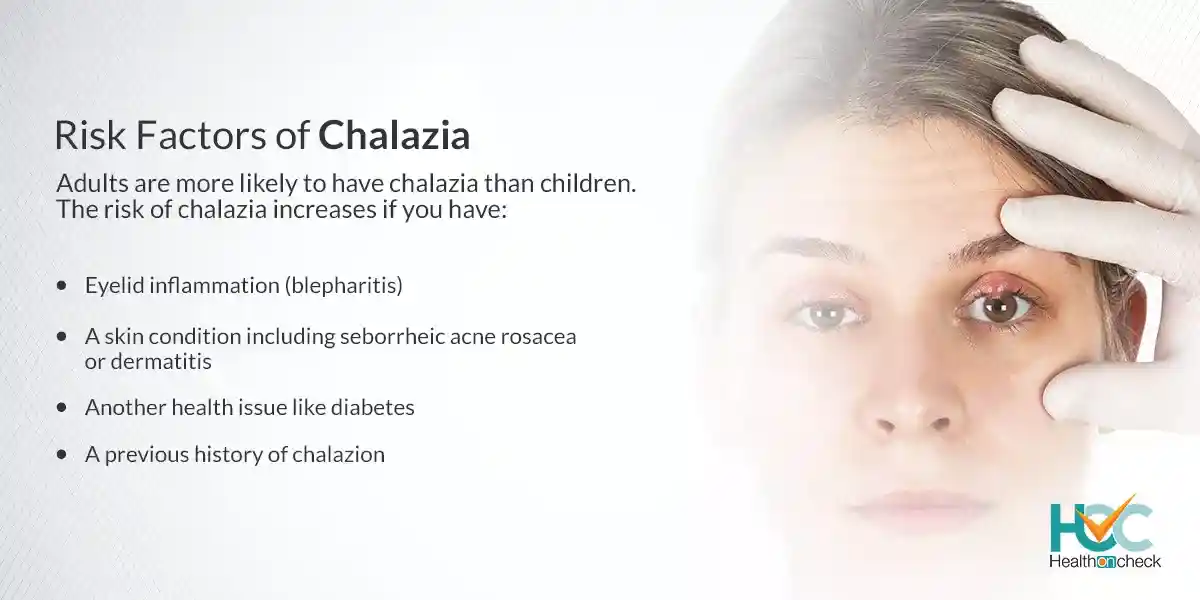
Adults are more likely to have chalazia than children. The risk of chalazia increases if you have:
- Eyelid inflammation (blepharitis)
- A skin condition including seborrheic acne rosacea or dermatitis.
- Another health issue like diabetes
- A previous history of chalazion
What are the Complications of Chalazia?
Chalazia can lead to complications such as lash loss, lid notching, cosmetic deformity, and adjunctive infection, such as the development of hordeolum or preseptal cellulitis. Improperly drained marginal chalazia can lead to trichiasis, notching, and lash loss.
How Chalazia is Diagnosed?
An eye specialist such as an optometrist or an ophthalmologist can diagnose a chalazion. They can examine the chalazion and offer treatment options.
An eye specialist can diagnose chalazia through:
Health history: Your eye specialist will check your complete health history which helps them to identify underlying issues that might be contributing to the development of a chalazion.
External eye exam: Your eye specialist will examine your eye, eyelashes, eyelid, and skin texture.
Thorough eyelid exam: In this procedure, your eye specialist will beam a bright light and magnification will be used to check the base of your eyelashes. They will also examine the oil glands’ openings.
What are the Treatment Options Available for Chalazia?
In most instances, a chalazion can be treated at home. Chalazia usually goes away in a month or even before that.
You need to be aware that you should never push on a chalazion or try to pop it as it can injure your eye. Home remedies to treat chalazia include:
Warm compresses: First, take a clean washcloth and wet it with warm water. Put it on the affected eye and hold for 15 minutes. You should repeat this at least three times a day and it helps to open up the blocked oil gland.
Massage: Massage your eyelid gently a few times a day for 2-3 minutes each day, with light to medium pressure. It can help to open the blocked oil gland.
Good hygiene: Avoid eye makeup if you have a chalazion. When the chalazion drains, you should keep the area clean. Avoid touching your eyes and follow good eye health practices.
If the chalazion doesn’t go away even after these procedures, you should visit an eye specialist. The chalazion might require the fluid drained through a small incision. You might also require an injection of steroids to decrease swelling and inflammation.
Living with Chalazia
It’s very important to keep your eyes healthy for your vision and quality of life. Sometimes, though, some conditions such as styes and chalazia might occur and whilst these troublesome eye problems can be unsightly, they can be treated at home. Discuss with an eye specialist about matters you can do to avoid such eye problems.
Whom To Consult?
If you have a chalazion that is not going away with home treatment, then you should visit an eye specialist. An eye specialist will be able to check the eye and provide additional treatment options. You shall also consult with your doctor if you have recurrent chalazia.


